Dictionary.com defines a reservoir as “a natural or artificial place where water is collected and stored for use, especially water for supplying a community, irrigating land, furnishing power, etc.”
In the United States alone, you’ll find nearly 2,000 reservoirs. There are many uses for these bodies of water, and you’ll find them in just about every state. Today we’re going to look at three major ones with extremely low water levels that threaten the future of millions. This is your guide to everything there is to know about how reservoirs lose water and why it’s happening at such a rapid rate.
The Use of a Reservoir
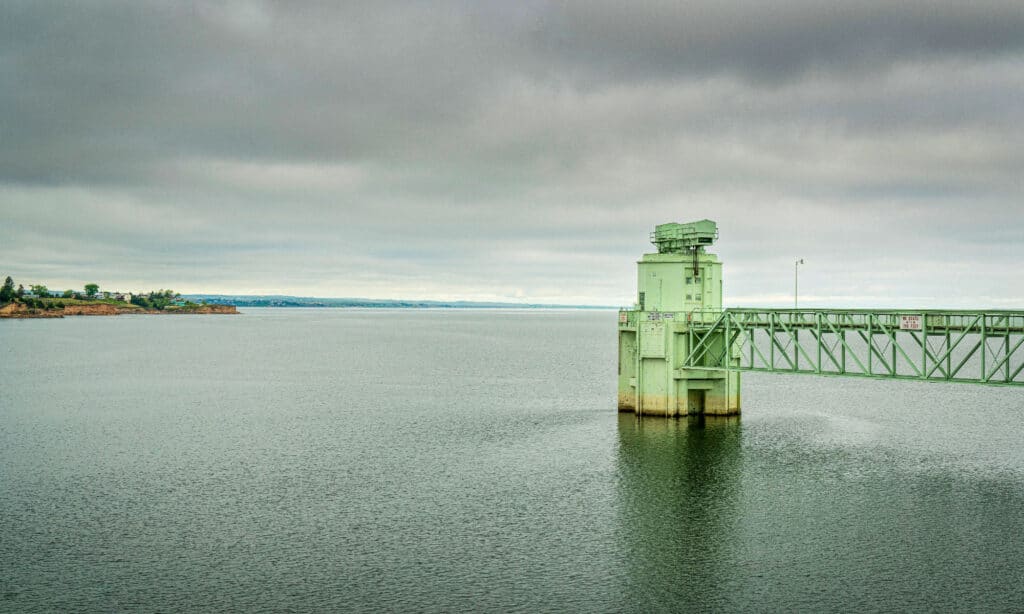
marekuliasz/Shutterstock.com
Flood risk control is the reservoir’s most important function. Reservoirs store water during periods of heavy rain, lowering the risk of flooding, then gradually release the water over the ensuing weeks and months to the local region.
By supplying water to the lower distributing areas, which are open areas where surface water can seep through into the subsurface and replenish the aquifers in a groundwater basin, they help with water conservation in addition to helping to reduce flood risk.
A Major Problem
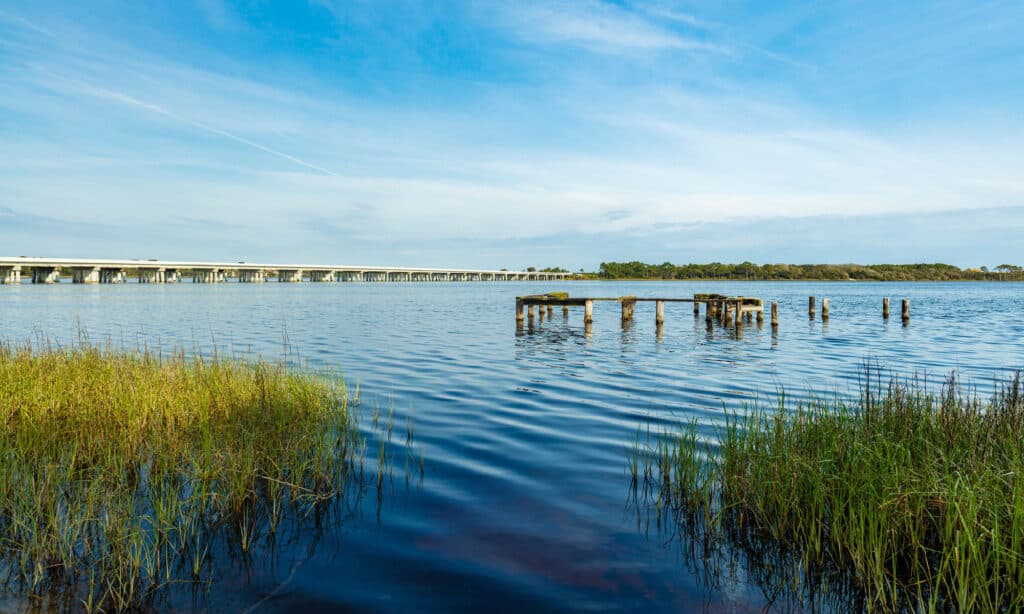
iStock.com/RAUL RODRIGUEZ
The two largest water reservoirs in the United States have decreased to “dangerously low levels,” the U.N. warned in August 2022. This is a result of the effects of climate change.
According to the U.N. Environment Program, the situation has gotten so bad that these reservoirs, Lake Mead and Lake Powell, are about to achieve “dead pool status.” This is the condition where water levels are so low that downstream flow stops completely.
Without this flow, hydroelectric power plants would be unable to function, endangering the region’s ability to supply millions of people with electricity. By the end of this year, scientists have predicted that the river-fed lakes Lake Mead and Lake Powell will only be 25% full.
Water restrictions will be implemented across the region as the western water crisis worsens, but analysts believe that these measures might not be sufficient. As regular droughts and temperature increases confront a rising population, the situation has been made worse by the combined effects of climate change and overconsumption.
Reservoirs at Risk
There are a few major reservoirs in the United States that are at risk of drying up. Let’s take a look at the history and the current state of the three we should be aware of.
Lake Mead

iStock.com/Michael Vi
On the border between Arizona and Nevada, near the southwest corner of Grand Canyon National Park, the Colorado River empties into Lake Mead, one of the biggest artificial lakes in North America. Upon the 1935 completion of Hoover Dam, it started to fill.
Hoover Dam was built in less than five years and was the biggest hydroelectric dam in the world at the time. Approximately 30 miles east of Las Vegas, it crosses the Colorado River in Black Canyon. Hoover Dam is still the tallest concrete arch dam in the United States and is now a National Historic Landmark.
Elwood Mead, the director of the Bureau of Reclamation from 1924 to 1936, made a significant contribution to the West’s water policy and geography, and the lake that developed behind it bears his name.
Since Hoover Dam’s construction in the 1930s, when the Colorado River’s flow was halted and this lake was formed in the desert of the American Southwest, the lake has never been lower.
At the time, it was regarded as a wonderful accomplishment. However, the water level of Lake Mead has decreased to 1,040.92 feet as of July 31, 2022, following a 22-year decreasing trend. Things that have been submerged for decades are coming to light as the lake recedes. People are discovering a lot of debris as well as boats, including one from World War II. and human bodies.
The water level in Lake Mead is at a historic low and is now fewer than 150 feet from the “dead pool status,” which is the point at which water cannot flow downstream from the dam. It would be disastrous if this source’s water was completely lost. The issue would only get worse if the hydroelectric power source that provides a portion of the electricity for 29 million people in the Southwest was eliminated.
Prineville Reservoir
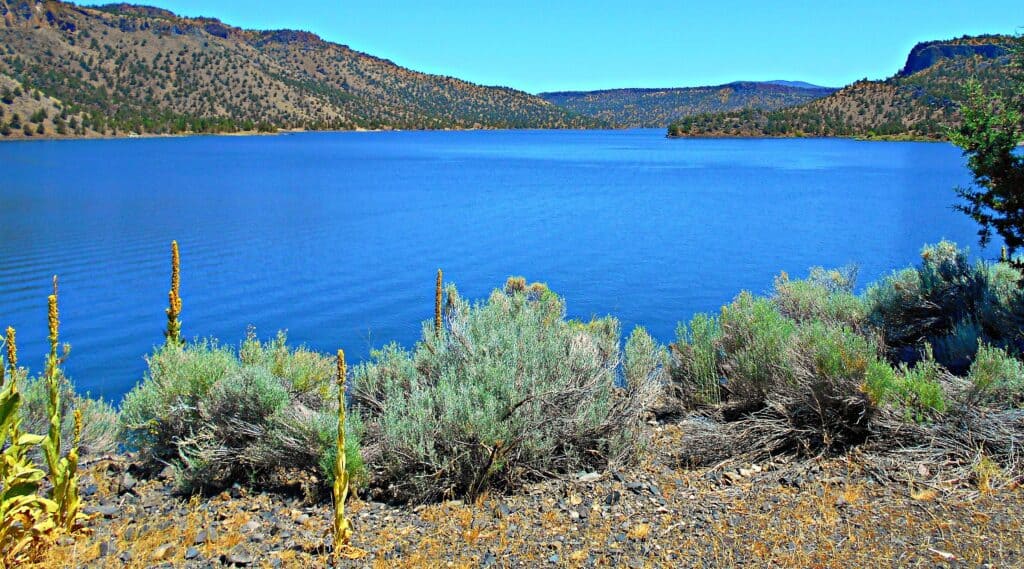
Hills Outdoors/Shutterstock.com
Through the construction of the Arthur R. Bowman Dam, the Crooked River upstream of Prineville was dammed, resulting in the Prineville Reservoir. The reservoir was completed in 1961 and is a component of the Crooked River Project by the U.S. Bureau of Reclamation. It floods a canyon that is covered in junipers and sagebrush.
The Ochoco Irrigation District is the contract operator of the dam and reservoir, which are owned by the Bureau of Reclamation. With secondary goals of Crooked River flood management and public recreation, Prineville Reservoir spans 18 miles of the Crooked River and serves primarily as an irrigation storage water body.
The Prineville Reservoir can hold around 150,000 acre-feet of water and has a maximum depth of 130 feet. The reservoir’s water level has been gradually declining. According to Chris Gerdes, manager of Prineville Reservoir State Park, the reservoir’s water level in 2022, at 18% of capacity, was the lowest it had been since the 1990s.
Although the reservoir’s water level changes over time, it has remained low in recent years. The reservoir was at 26% as of March 2022, and the only guests are a dozen or so geese. Gerdes predicted that the water level would reach 30% in the future, allowing the first dock to open.
However, other docks, such as those at Powder House Cove or the Jasper Campground, require a water level of 50%, which wasn’t the case in the summer of 2022. The low water levels have also had an impact on fish, with some of them dying after becoming caught in tiny water pools as the reservoir’s water level falls.
Lake Powell
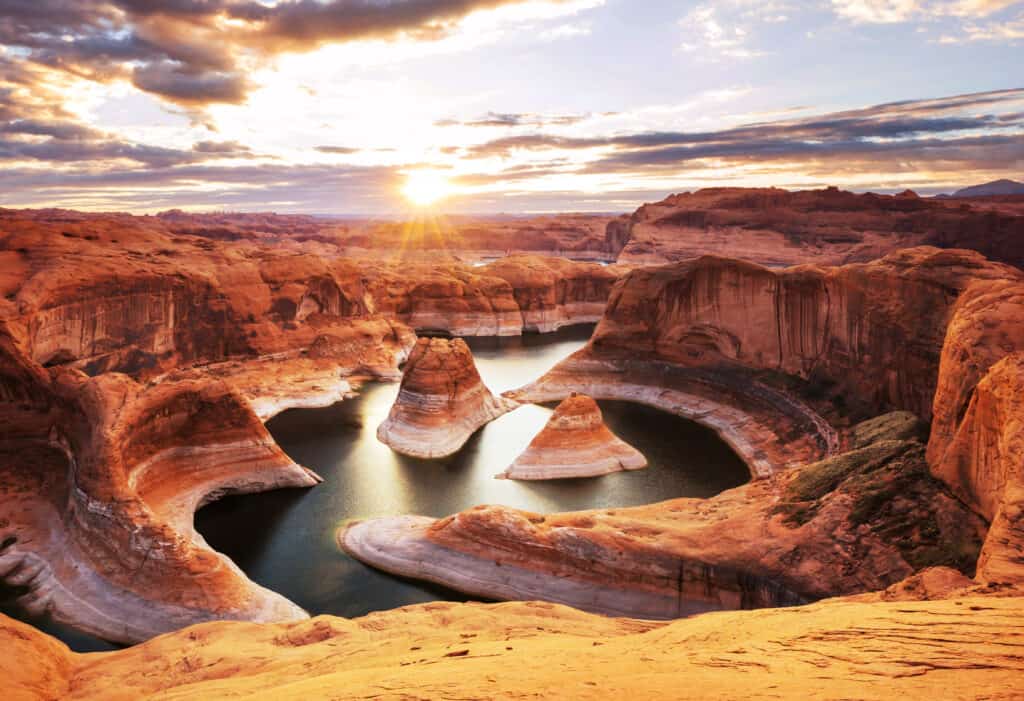
Galyna Andrushko/Shutterstock.com
In 1963, the Glen Canyon Dam diverted the Colorado River’s flow into Lake Powell, which was then bordered by stunning sandstone walls. It is amazing to think that it needed 17 years for the lake to fill the canyon to the high-water mark, which is 3700 feet above sea level, providing America with its second-largest artificial lake and a recreation unlike any other.
On June 20, 1980, Lake Powell attained a “full pool,” which is 3700 feet above sea level. Since then, it has developed into the top spot for house boating, accommodation, and R.V. trips. Located in some of Southern Utah’s most beautiful red-rock desert scenery, Lake Powell is undoubtedly the most picturesque lake in all of America.
The hot megadrought in the Western United States is causing Lake Powell to dry up quickly, and it might disappear entirely in just a few decades. Lake Powell, an artificial lake formed by damming the Colorado River, is the second-largest reservoir in the United States by total capacity, behind Lake Mead. It straddles the Utah/Arizona border. In comparison to both 2021 and 2020, Lake Powell’s water levels are now far lower than they were then.
Eric Balken with the Glen Canyon Institute has this to say about the current situation of the reservoir, “Based on the best climate data that’s available, it’s really unlikely that this reservoir is going to be around in the decades to come.”
In light of the severe droughts afflicting the Western United States, experts fear that Lake Powell may someday completely dry up. According to the U.S. Drought Monitor, the state borderland where Lake Powell is located is classified as being in “Extreme Drought,” with more than two-thirds of the entire country currently experiencing some level of drought conditions.
What Can We Do?
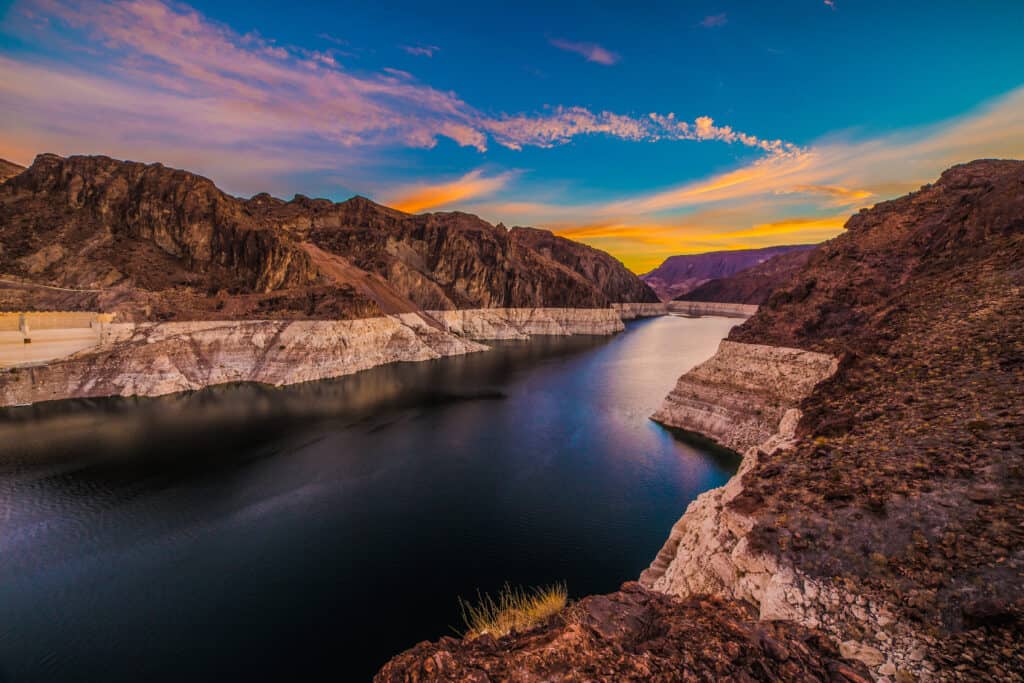
fellswaymedia/Shutterstock.com
Nearly four billion people already go at least one month each year without enough water, and the problem is quickly getting worse. The world’s freshwater resources are coming under more and more pressure as a result of climate change, rising demand, and an expanding global population.
The system that produces and recycles water has been harmed by human activity; therefore, repairing it must now be a major concern. With these major reservoirs drying up, there’s only so much the average person can do to help reverse the damage.
Sharing Water
Competition over water is likely to increase, and good water governance will be critical. Though having access to clean water and safe sanitation is a human right, the fact remains that one in four persons still does not have access to clean water at home.
Similarly, around half the global population lacks safely managed toilets, which is a major driver of disease and deaths, especially among children. At a time of growing climate threats, lack of water and sanitation exacerbates the vulnerability of the world’s poorest.
Increasing justice and resilience through water sharing is effective. Relations between nations that share a river, lake, or groundwater aquifer are no different. By administering it jointly, they are considerably more equipped to deal with the rising frequency of droughts and floods, as well as the increasingly unpredictable rainfall patterns that must be anticipated as the world’s temperature rises.
Reducing Food Waste
A third of the food produced or processed does not reach consumers after leaving the farm or facility. This number, especially when combined with this one, is astonishing: nearly 800 million people globally live with hunger. Likewise, every year, we release 4.4 gigatons of CO2-equivalent from the food we squander into the atmosphere, or almost eight percent of all anthropogenic greenhouse gas emissions.
Food loss is often unintentional and structural in areas with inadequate infrastructure and income levels. Examples include substandard roads, a lack of refrigeration or storage options, subpar machinery or packing, and an unfavorable mix of heat and humidity. Waste happens earlier in the supply chain when food spoils on farms, in storage, or during delivery.
Cooking, ordering, and buying food that you will use, is key. Never buy or cook more than you can handle. If you have non-perishables that you don’t end up using, donate them. If you have extra food from cooking too much, see if a friend or family could use a free meal.
Bottom Line
Overall, there are several things you can do to help reduce climate change. The majority of issues are from massive companies that require a systemic change to overturn potential damage to other reservoirs in the country. We hope that changes are made to restore Lake Mead, Lake Powell, and Prineville Reservoir.
Up Next:
- Lake Mead Is So Low It has Revealed an 1865 Ghost Town
- These are the 10 Driest States in the U.S., and Droughts are Coming!
- Shocking Images from Space Show How Much Lake Mead is Vanishing
- The Worst Droughts in Human History and What Happened After
The post 3 Major US Reservoirs at Dangerously Low Drought Levels appeared first on AZ Animals.
from Animal News, Facts, Rankings, and More! - AZ Animals https://ift.tt/gzBWYIc